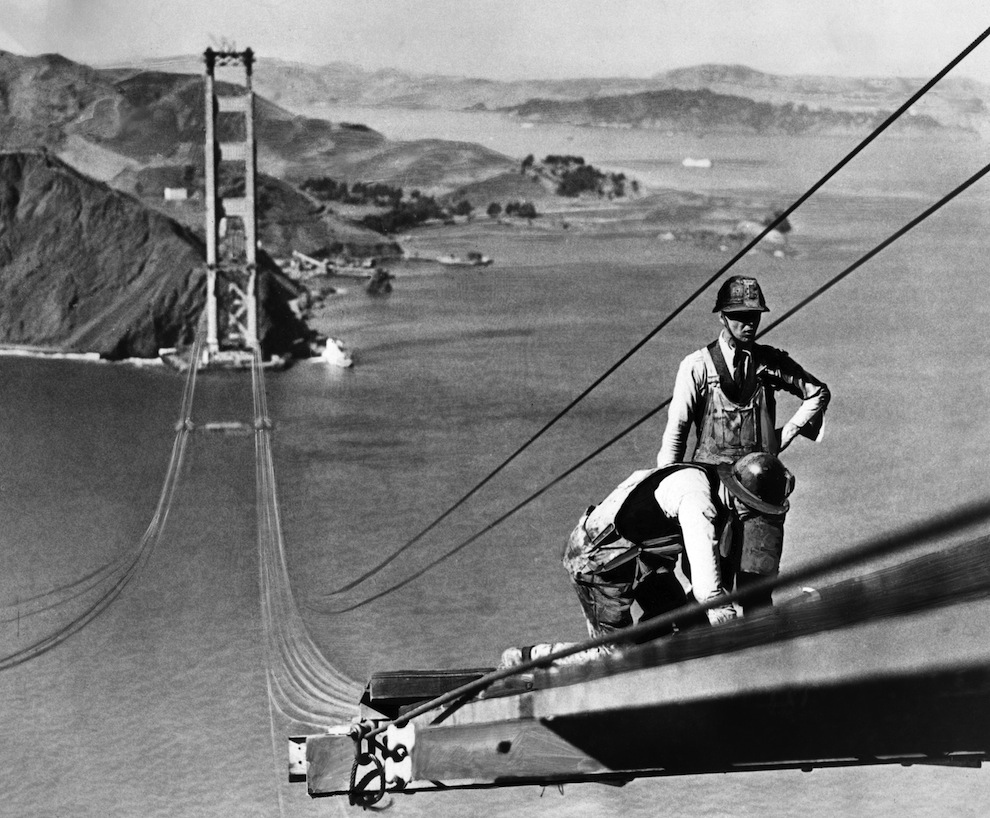Our month-long tour of iconic American landmarks and the innovative processes used to build them continues. This week, we head westward, to the Golden Gate Bridge in San Francisco, California.
Still considered among the “greatest civil engineering achievements of the 20th century” by the American Society of Civil Engineers, the Golden Gate Bridge was the longest suspension bridge in the world when it was built in the 1930s. That record has been surpassed by quite a few other bridges by now, but it’s still the 2nd longest suspension bridge in the U.S., after the Verrazano-Narrows Bridge (damn you, New York!).
While it gave up that particular crown decades ago, the Golden Gate Bridge is still a remarkable piece of engineering and construction—especially the cables that hold it up:
- The main cables, each 7,659 feet long and just over 3 feet in diameter, are still the largest bridge cables ever made. (Take that, Verrazano-Narrows!)
- Each main cable contains 27,572 parallel wires. If you laid them all out end-to-end, they’d wrap around the equator more than 3 times.
- The cables had to be built on-site, using trolleys to carry each individual wire back and forth across the channel. Then they were bound together to form the cables.
- The height of the bridge in the middle can vary by as much as 16 feet, depending on the temperature of the air, due to thermal expansion and contraction of the cables (oy, starting to feel sick thinking about that).
- The cables can bend up to 27 feet laterally in the wind (okay, definitely feeling sick now).
Cable-stayed bridges are still state-of-the-art today as a new generation of civil engineers continues to push the envelope on what’s possible. Head over to AU online and check out this class from AU 2015 about the construction of the longest cable-stayed bridge in Africa, across the Bouregreg River:
Novel 3D Approach for the Construction Study of Africa’s Longest Cable-Stayed Bridge
The class is taught by Arnold Ledan, the engineer responsible for the analysis and shop drawings for the project. It was up to him to make sure that the bridge design would actually be feasible in the real world. Given the complexity of the project, traditional 2D drawings simply weren’t sufficient. By creating the drawings in 3D using AutoCAD Civil 3D, Inventor, and other Autodesk software, Ledan and his team were able to identify structural problems in both the pylon and the deck designs and adapt the design before construction. I’m sure the construction team on the Golden Gate would have loved to have that, but hey, they did fine.

OFF/AFP / Getty Images



